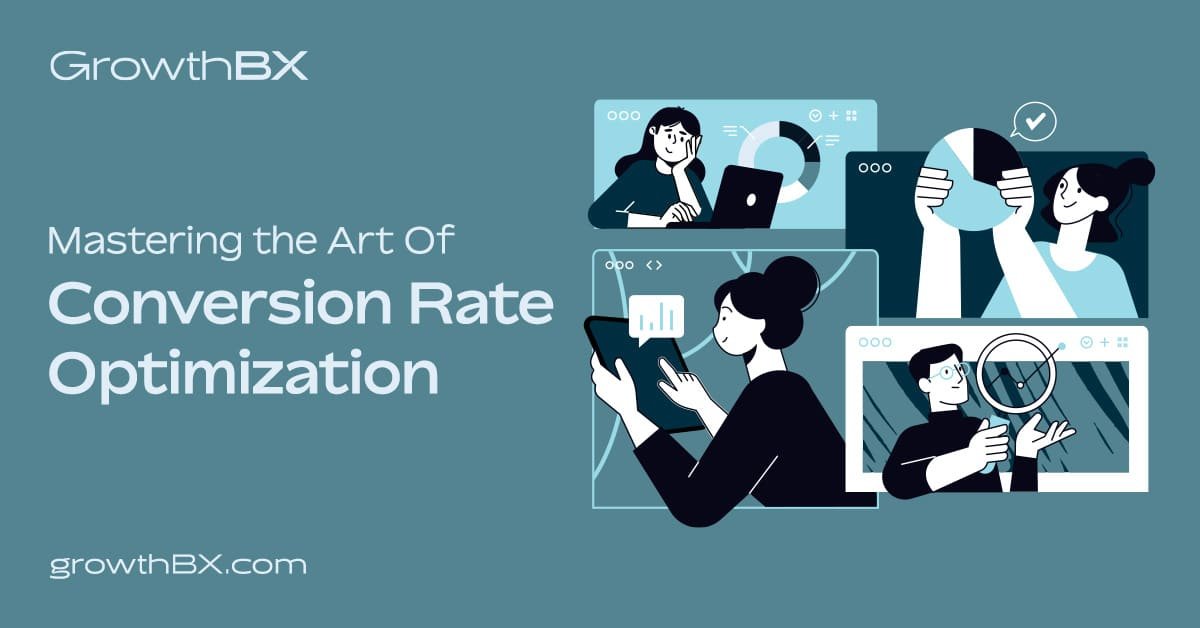The majority of companies understand how critical it is to stay active on well-known social media sites. But social media campaigns won’t be beneficial unless you can measure the outcomes of your work. That’s where understanding and tracking your social media return on investment (ROI) becomes essential.
You can’t say for sure whether your marketing techniques are working without monitoring your return on investment from social media. Even worse, you don’t have important knowledge about what you’re doing well and where you can do better.
Luckily, figuring out your social media return on investment doesn’t have to be that difficult. By using the appropriate resources and strategy, you can get the important knowledge required to make the most of these platforms in order to grow your clientele and eventually attract new ones.
We’ll examine social media return on investment in the following sections:
What is Social Media ROI?
The amount of money you make in comparison to your investment in social media marketing is expressed as a percentage, or social media ROI. The more effectively your spending contributes to business growth, the higher your ROI.
Why Is It Important to Track ROI on Social Media?
The only surefire way to determine whether your efforts are yielding results is to measure ROI on social media. As with any other marketing tactic, optimizing the return on your investment depends on having a precise reporting system.
The following are the main advantages of figuring out social media ROI:
- Calculating reach: The abundance of metrics that are available to firms through online marketing is one of the biggest benefits. Unlike traditional marketing, which depends on averages to define reach, social media platforms provide accurate statistics about how many people you reach and how many take actions towards learning about your brand.
- Making decisions: You may identify which social media channels work best for your company and what kind of material gets the most response from your audience by monitoring return on investment (ROI). Armed with this knowledge, you can concentrate on the content and platforms that consistently yield the best outcomes.
- Optimizing spending: You want to make sure you get the most out of your efforts when calculating the cost of social media. Recognizing the most popular apps, content, and interactions might help you make more money while spending less.
Furthermore, having statistics and data at your disposal can assist you in making defensible decisions, particularly when working with people who are not part of the marketing and social media departments.
Three Metrics to Track for Social Media ROI
Metrics and performance indicators from social media are crucial for figuring out your ROI. It can be difficult to put a monetary value on social media interactions, therefore you should think about alternative success metrics.
A common mistake in social media marketing is focusing on metrics that don’t directly support your business goals. These indicators, which include page likes and follows, are frequently referred to as “vanity metrics” as, despite their potential for flattery, they don’t really show whether you’re gaining more clients.
Metrics that are in line with your overall business objectives should be used to evaluate the return on investment of your social media strategy. These metrics include reach, site traffic, and conversions.
Reach
Every major social media site allows businesses to monitor how many users they reach with each post. Because of this, reach becomes one of the easiest KPIs to monitor.
If increasing brand awareness is one of your social media objectives, monitoring reach can be useful even when a post’s viewership does not guarantee interest in your company. You may monitor if your audience is growing thanks to it.
This metric can also be used to modify your content strategy. You can identify the most effective times to post on various platforms, the best post structure, and the kinds of information that will captivate your audience by analyzing the reach of your posts.
Let’s say, for instance, that you observe that Facebook posts posted in the afternoon only get seen by a few hundred people, but posts made in the evening are seen by a thousand. In that case, you should consider altering your posting schedule to maximize your reach.
Site Traffic
To gauge the effect of your social media marketing on your website, you should use analytics tools like Google Analytics in addition to the built-in statistics provided by each social network. One of the most critical metrics to track in these programs is the amount of site traffic each of your accounts generates.
You can verify this if you’re using GA4 by going to Reports > Acquisition > Traffic acquisitions. You can then apply filters to separate traffic originating from various social media platforms:
You can use this information to determine which social media networks bring in the most visitors to your website and what content appeals to your followers the most. You can safely assume that sharing links to visual content is more effective at engaging your audience if, for instance, you notice that the average session duration for your infographics is significantly longer than that of your written content.
Conversions
In addition to enticing new visitors to your website, it’s crucial to understand what they do after they arrive. This is the point at which conversion tracking is really helpful.
If you already have events and social sites configured in GA4, head to Reports > Acquisition > Traffic Acquisitions. Then, you can sort by network, see who converted from each network, and check how many conversions you earned. This will be under the “Paid social” report.
It’s crucial to remember that a common error made by marketers is attempting, usually unsuccessfully, to drive sales directly from social media. If a visitor arrives via social media, it may be their first interaction with your site. They most likely won’t be prepared to buy right away in this case.
Rather, concentrate on alternative conversions such as completing contact forms and subscribing to email newsletters. These objectives don’t result in revenue right away, but they do indicate interest in your company and potential revenue in the future.
How to Calculate Social Media ROI
Now that we understand what social media ROI is, let’s learn how to calculate it with these three steps:
- Determine how much you spend
- Outline your social media goals
- Calculate your ROI
Let’s look at each one in more detail!
1. Determine how much you spend
You need to decide how much you invest in your campaigns before you can calculate your return on investment in social media marketing. This investment is essential for understanding your return.
When tallying up your spending, consider:
- Any platforms or tools you purchase: This could include social media management tools, design programs, and analytics software.
- Your budget allocated for social media ads: For accurate reporting, keep track of the amount you spend on each campaign.
- Content creation (in-house or through an agency): Factor in the cost of writing, designing, and scheduling your content.
- Ongoing costs for your social media team: This includes salaries, benefits, and any professional development.
- Any help from agencies or consultants: If you outsource any social media tasks, add these costs to your tally.
2. Outline your social media goals
You can’t track your ROI if you don’t have specific targets. Setting specific social media goals helps quantify your results and determine your ROI.
Many businesses use social media for the following objectives:
- Purchases (in the app or on a website)
- Downloading content
- Calls
- Email list signups
- Contact form submissions
- Appointments booked
What is the success metric used by your company? Which stage of your sales funnel can social media assist with the most? Understanding your objectives allows you to select the most appropriate goals to track.
After you’ve created your goals, make sure you’re monitoring them using a program such as Google Analytics (GA4). You can gather all of your data in one location for simple analysis with this free tool.
3. Calculate your ROI
Once you have your investment and the monetary value of your goals, you can calculate your social media marketing ROI. The formula to do so is:
Social media ROI = (Earnings – Costs) x 100 / Costs
Assume for the moment that you invest $1000 in an Instagram promotion and receive $5000 in campaign-related sales.
Social media ROI = (5000 – 1000) x 100 / 1000 Your ROI would be 400%!
Six Tips for Improving Your ROI
To enhance your social media ROI, consider these refined strategies integrating insights from multiple sources:
- Test and Optimize Your Strategies: Continuously experimenting with your social media content and campaigns is crucial. Employ A/B testing to see which types of posts, visuals, and calls to action resonate most with your audience. This iterative process allows you to refine your strategy based on concrete performance data, ensuring that your social media efforts always align with what works best for your audience.
- Evaluate and Understand Your Audience: Regularly analyzing your audience demographics and engagement patterns is essential for creating relevant and compelling content. Use tools to gather and analyze data about your audience’s preferences, behaviors, and interactions with your content. This information helps tailor your social media strategy better to meet the needs and interests of your audience, potentially improving engagement and conversion rates.
- Leverage Data Mining for Audience Insights: Implementing data mining techniques can uncover more profound insights into your audience’s preferences and behaviors. By analyzing social media interactions and trends, you can identify patterns and opportunities for engagement. This data-driven approach enables you to create more targeted and compelling content, enhancing your ROI.
- Focus on Key Metrics Aligned with Your Goals: It’s important to track metrics that directly reflect your social media objectives. These may include engagement rates, reach, site visits, leads generated, and sales/revenue. Select metrics that are in line with your overall business objectives and that most accurately reflect the actions you want your audience to take.
- Calculate and Monitor Your Costs: Understanding and managing your social media costs is fundamental for calculating ROI. Include all relevant expenses, including content creation, tools and subscriptions, advertising budgets, and team costs. Monitoring these costs closely enables you to assess the success of your social media initiatives and modify your plans as necessary.
- Utilize High-ROI Formats and Strategies: Short-form videos are becoming a very popular content format with big return on investment. Focusing on content that resonates with your audience, such as humorous, interactive, or educational material, can also enhance engagement and conversion rates. It’s crucial to stay current on content trends and preferences to maintain your social media strategy fresh and effective.
By incorporating these tactics and keeping an eye on the ever changing social media scene, businesses may greatly increase their return on investment from social media. An effective and profitable social media strategy is built on a foundation of ongoing testing, audience comprehension, data-driven insights, cost control, and content trend adaptation.
Download Social Media Budget Planning and Content Calendar Templates
Ready to Start Measuring Your Social Media ROI?
This is the ideal moment to begin tracking the return on investment (ROI) of your social media plan if you haven’t already. You may better understand how your company uses its accounts and identify areas for development with the aid of accurate reporting.
We at GrowthBX would be happy to handle your social campaign management needs. We have years of expertise handling successful campaigns for clients across a variety of industries. If you would like help quantifying or enhancing your return on investment from social media, please contact us!








